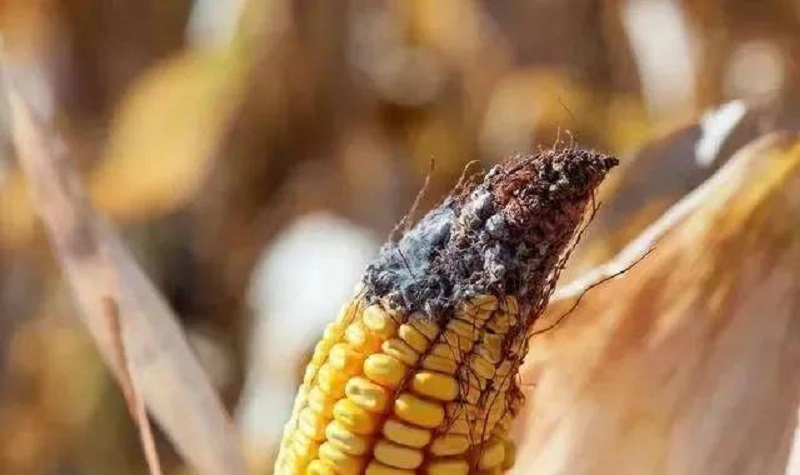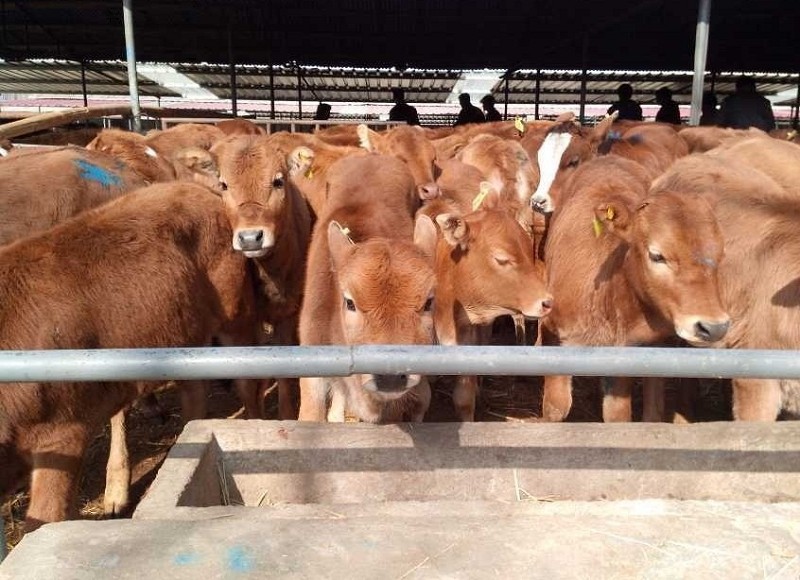When cattle and sheep ingest mildewed corn, they ingest a large amount of mold and the mycotoxins produced by it, which causes poisoning. Mycotoxins can be produced not only during maize field growth but also during warehouse storage. In general, mainly housing cattle and sheep are prone to develop the disease, especially in seasons with more rainwater, which has a high incidence because corn is very prone to mildew.
1. Harm
After the corn becomes moldy and deteriorates, it will contain a lot of mold, which will produce a variety of mycotoxins, which can damage the internal organs of the body. After cows and sheep eat moldy corn, the mycotoxins are transported to various tissues and organs in the body through digestion and absorption, especially the liver and kidneys are seriously damaged. In addition, mycotoxins can also lead to reduced reproductive capacity and reproductive disorders. For example, the zearalenone produced by Fusarium on mold corn can cause abnormal estrus in cows and sheep, such as false estrus and non-ovulation. Mycotoxins can also damage the nervous system and cause neurological symptoms in the body, such as lethargy, lethargy or restlessness, extreme excitement, and limb spasms. Mycotoxins can also weaken the body’s immunity. This is due to its ability to inhibit the activity of B lymphocytes and T lymphocytes in the body, resulting in immunosuppression, resulting in weaker body immunity, decreased antibody levels, and prone to secondary infections of other diseases . In addition, mold can also slow down the growth of the body. This is because the mold consumes a large amount of nutrients contained in the feed during the reproduction process, resulting in reduced nutrients, which makes the body appear slow growth and malnutrition.
2. Clinical symptoms
Sick cows and sheep after eating moldy corn showed apathy or depression, loss of appetite, thin body, sparse and messy fur. The body temperature rises slightly in the early stage and decreases slightly in the later stage. The mucous membranes are yellowish, and the eyes are dull, sometimes as if falling into a drowsiness. Often stray alone, bowed heads, drooling a lot. Sick cattle and sheep usually have movement disorders, some will lie on the ground for a long time, even if they are driven, it is difficult to stand up; some will sway from side to side when walking with a staggering gait; some will kneel with their forelimbs after walking for a certain distance, artificially whipping Only then was able to barely stand up. There are a large number of viscous secretions in the nose, inspiratory breathing difficulties appear, alveolar breath sounds increase in the early stage, but weaken in the later stage. The abdomen is enlarged, there is a sense of fluctuation in touching the rumen, the peristalsis sounds are low or completely disappeared on auscultation, and the real stomach is obviously expanded. Difficulty urinating, most of the adult cattle and sheep have subcutaneous edema around the anus, which will collapse after being pressed by hand, and it will be restored to the original state after a few seconds.
3. Prevention measures
For medical treatment, sick cattle and sheep should immediately stop feeding moldy corn, remove the remaining feed in the feeding trough, and conduct thorough cleaning and disinfection. If the symptoms of sick cattle and sheep are mild, use anti-mildew, detoxification, liver and kidney feed additives to remove toxins from the body and add them for a long time; if the symptoms of sick cattle and sheep are serious, take appropriate amounts of glucose powder, rehydration salt, and vitamin K3. A mixed solution composed of powder and vitamin C powder, used throughout the day; intramuscular injection of 5-15 mL of vitamin B complex injection, once a day.
Product:
Usage and Dosage:
Add 1kg of this product per ton of feed in the whole process
Add 2-3kg of this product per ton of feed in summer and autumn with high temperature and humidity and when the raw materials are unclean by visual inspection
Post time: Aug-11-2021





.png)
.png)
.png)
.png)